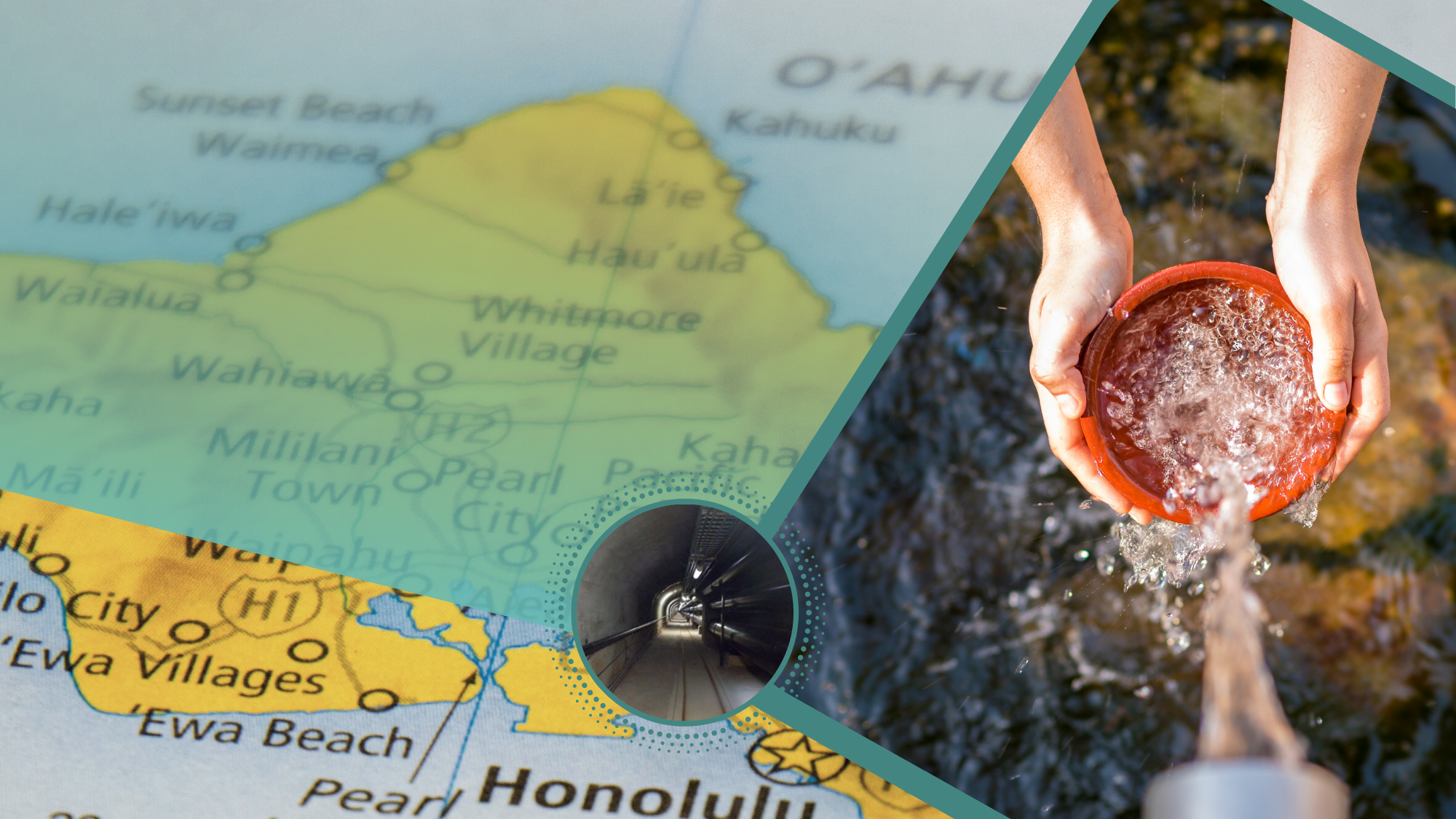The Navy must take steps to comply with the DOH’s emergency order
Posted: March 7, 2022
U.S. Secretary of Defense Lloyd J. Austin III announced Monday in a statement that the U.S. Navy will defuel and permanently close the Red Hill storage facility, which has been contaminating the drinking water of 93,000 Oahu residents since last November.
“Today’s announcement is a testament to the power of thousands of Hawaii residents who made their voices heard to shut down the Red Hill facility. ” Gov. David Ige said during a news conference Monday.
Dr. Elizabeth Char, director at the Hawaii Department of Health, said the Navy will comply with all five action items and the DOH’s emergency order that includes safely defueling Red Hill.
“This is a huge step forward in protecting Hawaii’s residents and our environment,” Char said. “We expect that they will comply. We’ll continue to work plan and assessment to ensure that all of these actions are performed safely. I think that’s really the key to it is that defueling needs to be done very safely. It’s not without risk.
“And while this announcement is good news, we have a lot more work ahead to ensure clean drinking water in our state,” she added.
In his written statement announcing Red Hill’s fuel tanks closure, Austin said the defueling is a “multi-step process.”
“Throughout the process, we will work closely with the Hawaii Department of Health and with the Environmental Protection Agency to safely defuel the Red Hill facility. No later than May 31, the Secretary of the Navy and Director of the Defense Logistics Agency will provide an action plan for safe and expeditious defueling of the facility, with a completion date target of 12 months,” Austin said.
According to the DOH’s emergency order, the Navy must submit a work plan and implementation schedule to safely defuel the bulk fuel storage tanks to the DOH.
Officials at the DOH said they still need to review the Navy’s work plan to make sure the defueling could be done in a safe manner and will review the plan to determine if a timeline of 12 months is necessary.
Ige said that with 100 million gallons of fuel in the Red Hill storage facility, “we need to take as much time as necessary to safely have it removed and moved somewhere else. We don’t know whether it’s too much time or too little time until we can get a plan from the Navy and really evaluate it.”
The governor explained that the state doesn’t have enough storage space to take all of the fuel currently stored at Red Hill, saying defueling will involve moving the fuel from storage tanks through pipelines to a shore-based facility, then ultimately into tankers or ships to move the fuel out of state.
“I think that until we get the plan, it’s premature to evaluate whether it’s too much time or too little time,” Ige added.
HSTA ‘cautiously optimistic’ on Red Hill tank closure
HSTA has been calling for the closure of the Red Hill since its board of directors unanimously passed a proposal in January calling for to defuel and permanently close the fuel tanks after multiple Hawaii schools were affected by the contamination.
HSTA President Osa Tui, Jr. said, “We view today’s news regarding the defueling and permanent closure of the Red Hill facility with cautious optimism. Any delays and other red tape need to be minimized or bypassed to get these tasks completed immediately.
“Even now, months after fuel was first detected in the water supply, schools and families continue deal with the effects. Each day that goes by without defueling only adds to the potentially disastrous public health threat for Oahu and the potential economic calamity for our entire state.”
HSTA held a forum on Red Hill earlier this year where educators from seven Hawaii public schools spoke out about the hardships they, their students, and their families faced because of the tainted water.
Students at affected schools were showing up late to school, in their pajamas, not having had breakfast, causing disruption to instruction and contributing to learning loss.
The Hawaii Board of Education at its general business meeting last week unanimously passed a proposal that strongly supports the state’s emergency order to defuel the storage tanks while calling for the Hawaii State Department of Education to be reimbursed for the extra costs the HIDOE schools have incurred dealing with the crisis.
In the beginning of the crisis, schools scrambled to obtain fresh water for drinking, hand washing, and food preparation. In cases where clean water wasn’t readily available, teachers relied on hand sanitizer and baby wipes.
Hickam Elementary teacher Michele Sasaki said, “That’s what we were running on for weeks, you know, in the middle of COVID. Aren’t you supposed to be washing your hands with soap and water?”

